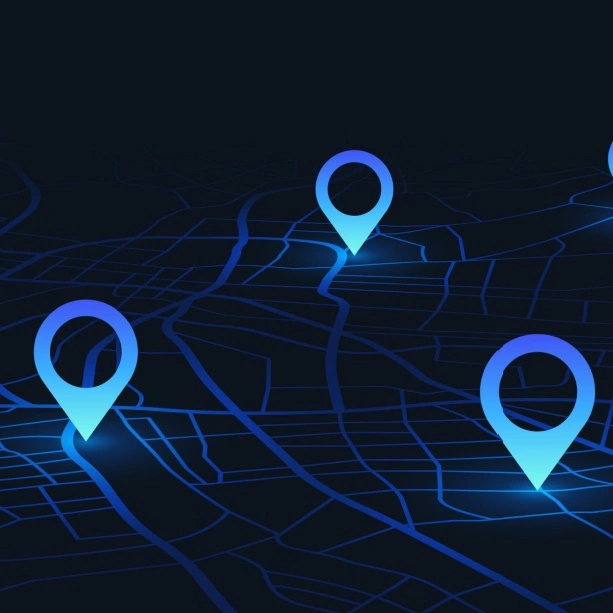Since the introduction of GPS, people and companies have been utilizing the technology to make their lives easier and improve the way things are done. The main form that has been seen is tracking. On a personal level, people use GPS to find out how to get from one place to another without pulling over to check their map. Companies have been taking advantage of the same function to improve the delivery process for both their drivers and their customers. In recent years, advancements have been made to GPS technology to provide accurate tracking. GPS tracking has revolutionized supply chain management. Let’s explore what GPS fleet tracking looks like and how you, as a fleet manager, can reap the benefits of this technology.
Increase Your ROI by Investing in AirFinder Everywhere
- Loss Prevention. Reduce the amount of loss that occurs during the supply chain process
- Location Coverage. AirFinder Everywhere uses a combination of GPS, Cellular, and WiFi to determine location everywhere
- Security Alerts. Know when a delay in shipment has occurred so the problem
can be addressed immediately.
Why Should You Use A GPS Tracking System?
The use of GPS tracking has transformed fleet operations across many companies. GPS technology streamlines supply chain operations by providing visibility of non-powered assets which reduces risks and cuts unnecessary costs. Let’s dive deeper into each of these to better understand how this is possible.
Asset Visibility
If you are a fleet manager, you likely have an existing telematics solution that provides visibility into your trucks’ locations. Trucks are powered assets, which is how telematics is able to provide you with all the information it does. As soon as the truck is turned off, you lose visibility until it’s powered back on. The truck isn’t the only moving asset you need visibility of, either. Your trailers and that which is on the trailer are important too. With telematics, you can know the location of a trailer if it’s connected to a powered-on truck. In any other scenario, you are lacking the visibility of the trailer. You also don’t truly know if a pallet or cargo is on the right trailer at all times. This deeper visibility is essential to have. Think of all the times a pallet was accidentally incorrectly loaded onto the wrong trailer. Many times, this problem isn’t realized until it’s too late and delays occur.
Investing in a GPS tracking solution is the solution to this problem. A GPS tracker easily tracks the location of non-powered assets in real time. Now you can understand asset utilization and prevent loss. Instead of delaying deliveries because of an incorrectly loaded trailer, you can receive an alert through geofencing capabilities – which we explore more in depth later – that a pallet has left the warehouse when it wasn’t scheduled to yet. Even more, there is a “main tag” on the trailer that tracks its location. This tag also acts as an access point. All the tags attached to pallets and cargo are assigned a “main tag” as custody. If the “main tag” senses there is a tag or tags missing from custody, you receive an alert so you can get that tag back into the right custody without falling behind on schedule. Asset visibility is important to have. And fleet managers are on the right track with using a telematics solution. Pairing telematics with a solution that isn’t reliant on power is the missing piece of the puzzle.
Risk Mitigation
Risk mitigation ties into asset visibility a little. This is because through asset visibility you are mitigating risks. Some of the most prominent risks fleet managers face surround lost assets. When you are lacking visibility of trailers or cargo, you are opening the door to loss caused by misplacement or theft. Attaching a GPS tracking device to these commonly lost items reduces the chance of them going missing. Even if they are misplaced or stolen, having the tracker makes for an easy and quick recovery, eliminating the cost of their replacement. Additionally, there are times when supply chain disruptions occur. Sometimes, these are caused by external factors that are unavoidable like traffic jams and accidents, but many times, the disruption is avoidable, being caused by bottlenecks. Tracking your assets gives you insight into how efficiently you’re operating. When there are bottlenecks, you know where they are occurring and can take action to fix the cause of the problem and keep operations running smoothly.
Cost Savings
Every company would love to find a way to cut unnecessary spending. Of that unnecessary spending, how much of your budget is put aside for replacing lost and missing assets? Sometimes replacements happen because something breaks or becomes unusable due to age. Many times, though, replacements happen because of a mistake resulting in lost assets. Over time, these replacements become extremely costly. Think about all the money you could reallocate if you weren’t spending it on replacements of cargo and pallets. Placing GPS tags on these assets prevents their loss, eliminating the resultant replacement costs. Another costly area you may not have considered is maintenance. Maintenance is a required upkeep cost that you cannot entirely avoid. In order for your trailers to remain useful for an extended lifetime, you need to maintain them properly. But it’s also possible that you’re spending more on maintenance than is necessary. Many fleets have trailers that are underutilized, and adequately using them saves costs in its own way. If there are some trucks that are being underutilized, they are likely receiving unnecessary maintenance tasks. The labor and assets used to complete these maintenance tasks are an unnecessary cost since the trailer isn’t being used. Additionally, the overused trailers are being used heavily and maintenance isn’t being scheduled anticipating this overuse. This leads to premature breakdowns and other problems. When tracking utilization through GPS tracking, you’re getting the most out of your trailer and making sure they are being properly maintained. When they are properly maintained, you don’t need to spend more money than is necessary on them.
How to Choose the Best GPS Tracking Solution
Since GPS tracking has proven to be such an important part of improving supply chain operations, there are quite a few solutions to choose from. The first step you need to take is to evaluate your specific needs. Each solution has different needs it meets. How accurate do you need the data to be? How many updates on location do you want per day? Do you transport sensitive assets that need to be monitored above location? Only you know what you truly need in a solution. Find out which companies meet your qualifications. You also need to determine if using a solution with just GPS is the best option. GPS asset tracking has proven to be useful, but at what cost? GPS technology is battery hungry, which makes it money hungry. How often will you need to replace the battery when using this technology on its own? Our AirFinder Everywhere solution pairs GPS technology with cellular and WiFi sniffing to optimize battery life while still gaining accurate location data. These are some or the more detailed analysis you have to think about when choosing a solution. You’re using the solution to improve operations and cut costs. Are you doing it in the best way possible?
Ways To Use GPS Tracking
There are quite a few features found in GPS tracking software that are useful for fleet managers. Let’s explore the top three.
Geofencing
Geofencing was mentioned earlier. It may sound complicated but it’s actually quite simple and extremely useful. Geofencing lets you set up virtual boundaries around areas you deem important. When GPS tags cross these boundaries, you receive an alert that immediately informs you which asset crossed the boundary. Commonly, fleet managers will define these boundaries around their warehouses so they are notified when assets are leaving the facility. If a trailer or pallet of cargo leaves that isn’t scheduled to, you can address the problem right away. If it was an accident, you can quickly correct it and continue on. If it was because of theft, you can notify authorities and provide them with the tracking information so the thief can be caught and you can get your asset back. This data is also helpful to have when planning for the future. Historical data can be used when making plans so adjustments can be made to ensure optimized supply chain operations.
Supply Chain Optimization
GPS tracking plays a pivotal role in enhancing supply chain operations by providing real-time visibility of valuable assets throughout the entire logistics process. By accurately monitoring the location, status, and condition of these assets, you can effectively track the movement of goods from suppliers to warehouses, distribution centers, and ultimately to customers, ensuring timely deliveries and minimizing stockouts.
Reduce Downtime
GPS tracking systems significantly reduce downtime in supply chains by providing real-time visibility. With this solution in place, you can monitor the location, usage, and performance of your assets. By analyzing data collected through the GPS tracking software, you can identify potential issues or signs of wear and tear before they escalate into major problems, allowing for timely maintenance interventions. Preventive maintenance helps minimize unplanned downtime due to equipment failures, breakdowns, or malfunctions. Additionally, a GPS tracker enables efficient allocation of resources and spare parts, ensuring that maintenance tasks are performed promptly and effectively. Oftentimes, excessive downtime is caused by ineffective planning. GPS tracking gives you the tools and data to make decisions on how to optimize uptime. This is both for employee efficiency and process efficiency. Maybe an employee only has one truck to load by 2 pm. They may start loading much earlier in the day, waiting around for the deadline, wasting fuel. GPS tracking helps you not only plan effectively, but also identify inefficiencies so those can be addressed. By reducing downtime GPS technology contributes to improved operational efficiency, increased productivity, and enhanced customer satisfaction throughout the supply chain.
Will You Increase Fleet Efficiency With GPS Tracking?
By harnessing the power of real-time tracking, fleet managers can streamline operations, reduce costs, and deliver exceptional service to customers. From minimizing downtime and vehicle wear to ensuring on-time deliveries and improving efficiencies, GPS tracking empowers fleet managers with the tools they need to stay ahead in today's competitive landscape. As technology continues to evolve, embracing GPS tracking represents not only a strategic investment but also a commitment to continuous improvement and innovation in fleet management practices. To learn about our GPS tracking system, AirFinder, book a demo with our team of experts.





